
Bollywood Odyssey: The Singing Taxman’s Journey Into Film Music, written by retired IRS (Indian Revenue Service) officer Ajay Mankotia
| Photo Credit: Special Arrangement
Bollywood music, although crucial to the success and legacy of a film, has always existed in a standalone capacity . After all, there are tonnes of bad or middling Bollywood movies that feature sublime music composed by masters. It is in the service of this inimitable world that retired IRS (Indian Revenue Service) officer Ajay Mankotia has written his recently published book Bollywood Odyssey: The Singing Taxman’s Journey Into Film Music (Readomania). The book is a collection of profiles of the iconic singers, music composers and lyricists who created some of the most famous Bollywood songs of all time — from the Mangeshkar sisters to Madan Mohan, Khayyam, R.D. and S.D. Burman and many others, Ajay has done a fine job of chronicling their highs and lows.
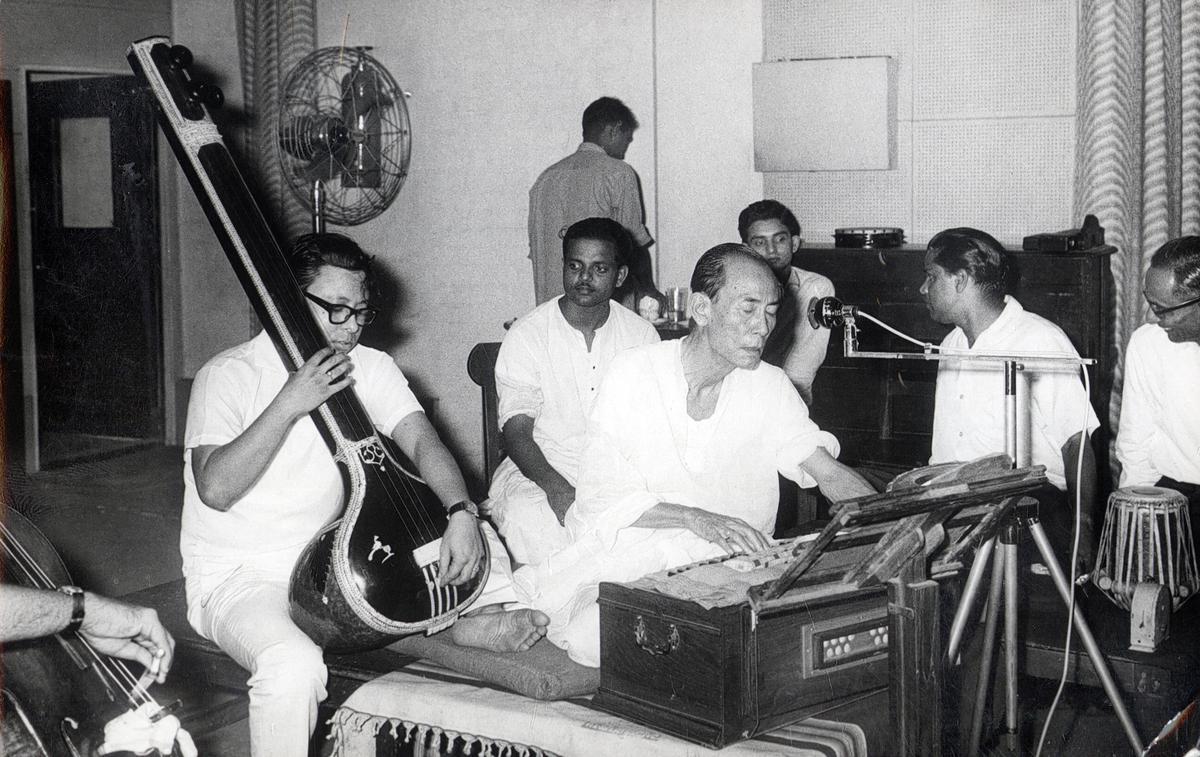
Music Director S.D. Burman during a song recording at Bombay HMV’s studios. Playing the sitar is his son Rahul Dev Burman (R.D. Burman).
| Photo Credit:
The HINDU ARCHIVES
Since his youth, Ajay has been a Bollywood music geek. In the 1950s, his mother Usha and his late maternal uncle Satish both worked at All India Radio; the former as singer and the latter as music composer. Thanks to this background and the passion that he has sustained throughout his life, Ajay is a veritable encyclopaedia of Bollywood, as I discovered during a telephonic interview.
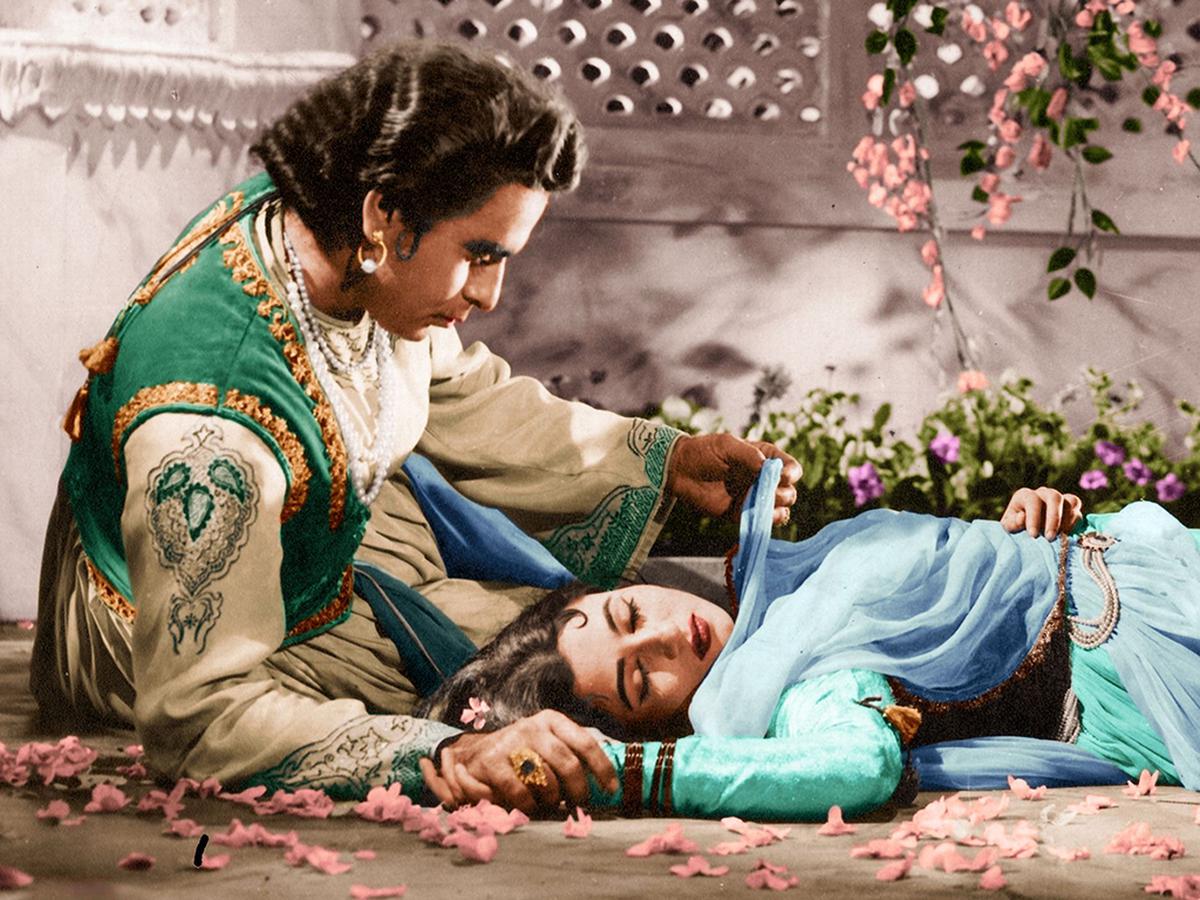
‘Prem jogan ban ke’, the song sequence featuring Dilip Kumar and Madhubala in the film Mughal-e-Azam.
| Photo Credit:
The Hindu Archives
“The lyrics that we had in Bollywood through the 1950s, 1960s and 1970s were written by poets,” said Ajay. “They had the necessary sensitivity, the sensibilities required for such a job. They were aware of the struggles of the marginalised. They also had the vocabulary and the skills required to express a romantic sentiment. It was very different from the lyrics we hear these days, which are quite forgettable in comparison.”
Recurring themes
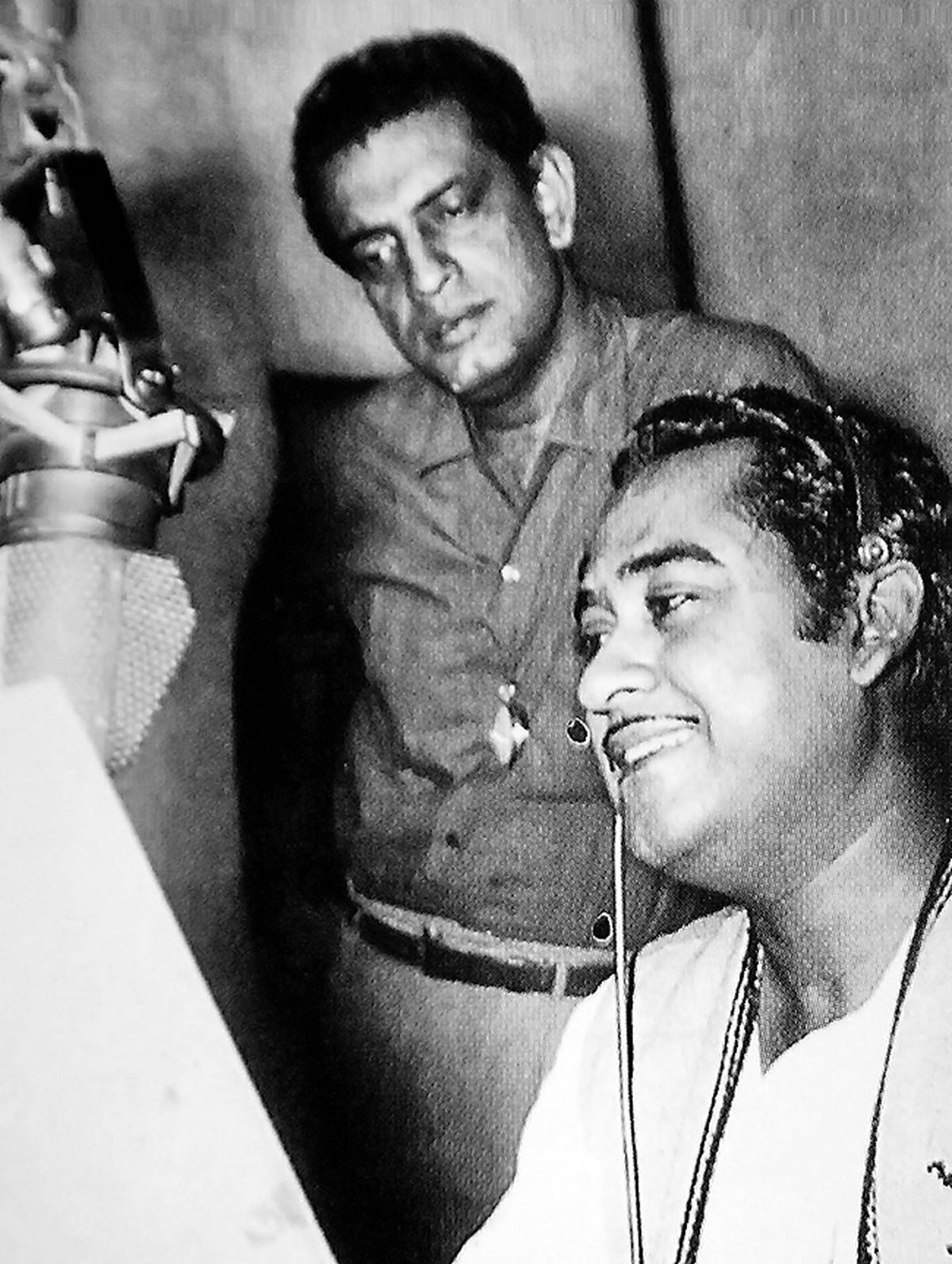
Ray and Kishore Kumar.
| Photo Credit:
The Hindu Archives
This tension between art and commerce is one of the recurring themes of the book — and, one could argue, one of the dominant narratives of all of Bollywood. Like in the essay on the composer Jaidev, Ajay describes one of his songs in this manner, which makes it clear that commercial concerns were the last thing on Jaidev’s mind.
Also read: Music without borders
“It was not a commercial concoction; it did not earn an instant applause. It was not a hummable fun and dance number. It was serious, intricate, layered; inspired by Hindustani classical and folk music. It wove a rich tapestry of musical and lyrical nuances. There was a subtle variation of pace and mood. It was difficult to appreciate on the first listening; but it grew on you, wrapping you in its complexity: raag-based structure, leisurely pacing, soothing orchestration, sensitive lyrics and myriad musical variations.”
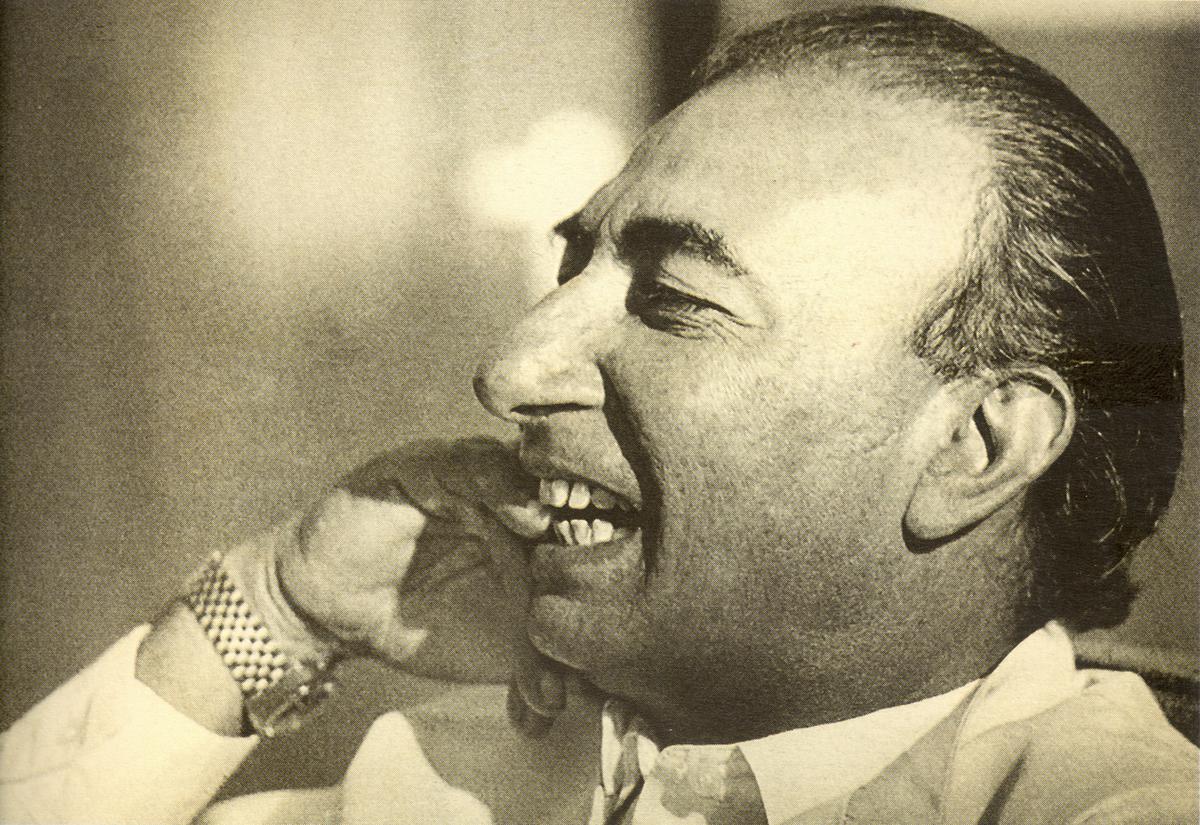
Sahir Ludhianvi.
| Photo Credit:
The Hindu Archives
Ajay Mankotia is similarly insightful about the political influences of the artistes being profiled here. For example, here’s his assessment of the great Sahir Ludhianvi. “If his poems and lyrics had a bitter tenor to them, it was because he was overwhelmed by the circumstances around him. It was this rare sensitivity towards the plight of the exploited sections that formed the cornerstone of his poetry. In his much-acclaimed poem ‘Talkhiyan’, he powerfully spoke of the structures of exploitation and their agents like the capitalist, the usurer, the priest, and others. While he critiqued the nation, and was cynical of politics, he never lost faith in the collective power of people.”
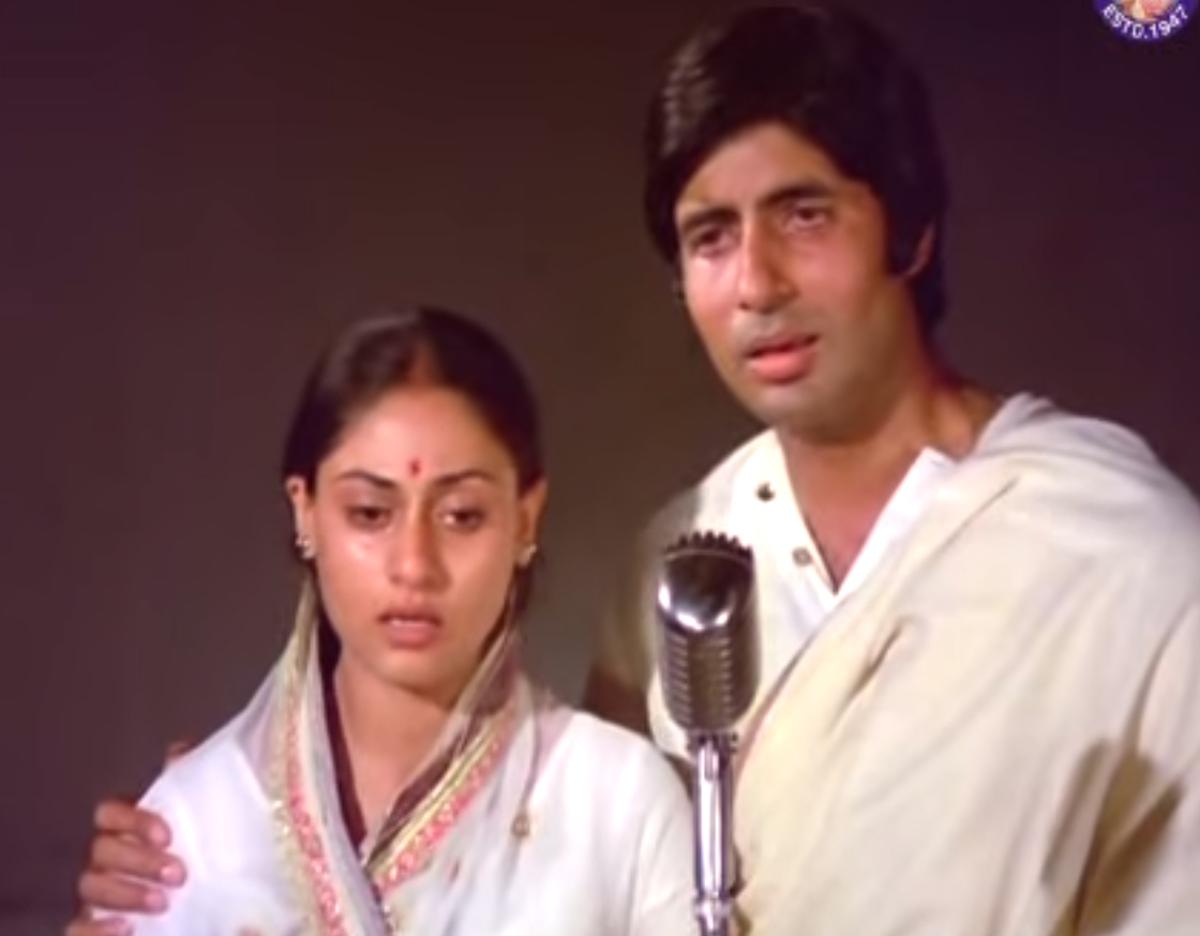
Amitabh Bachchan and Jaya Bhaduri in Abhimaan.
| Photo Credit:
The Hindu Archives
Bollywood Odyssey understands the multi-modal role of the Bollywood composer very well. In so many cases, the composer has a duty almost as momentous as that of the film’s director. Could we imagine films like Rockstar or Abhimaan without their songs? We cannot, because the music and the emotions therein are part of the film’s skeletal structure. Because of this inevitable truth, the composer’s task becomes a massively collaborative one, requiring a certain creative synergy from all parties involved. As Ajay said during our interview, “There are so many creative and pragmatic decisions during this process. Which singers to use for which song, how long should a song be vis-à-vis the scenes immediately before and after, which raags or symphonies are best-suited for bringing out grief, expressing love or remorse or patriotism…the possibilities are endless and the best composers know when to use a particular tool and how.”
R. D. Burman with playback singer Mohammed Rafi, and actor Dev Anand during a rehearsal session.
| Photo Credit:
The Hindu Archives
Bollywood Odyssey is highly recommended if you are a Bollywood newbie. It will give you a bird’s eye-view of the classics and educate you on the fundamentals of Bollywood music. And if you’re a hardcore Bollywood geek, pick up the book and you might learn something new.
For all the latest Entertainment News Click Here
For the latest news and updates, follow us on Google News.
